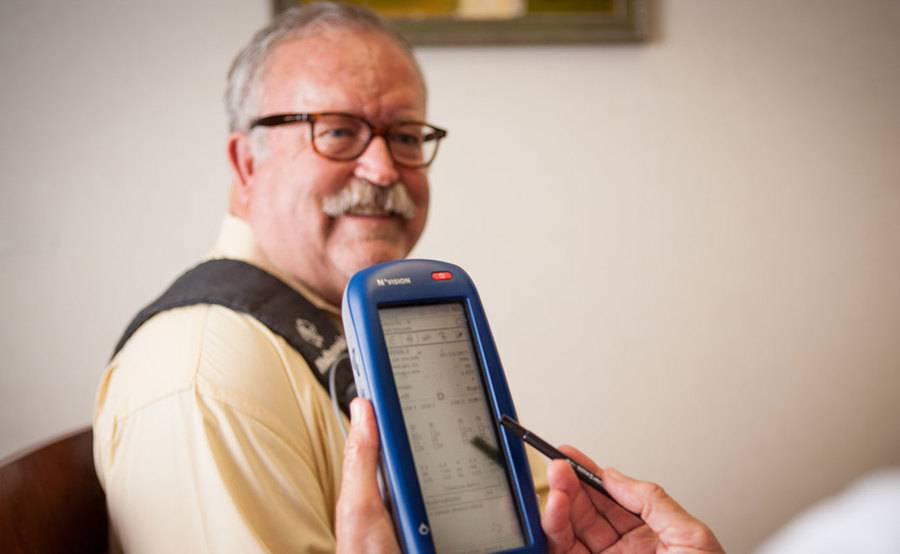Deep Brain Stimulation (DBS) Surgery
DBS for Parkinson’s disease and movement disorders

DBS for Parkinson’s disease and movement disorders
The Deep Brain Stimulation Program at Scripps Clinic is part of the Parkinson’s Disease and Movement Disorder Center in La Jolla. Deep brain stimulation (DBS) surgery can be an option when Parkinson’s and related movement disorder symptoms need supplemental surgical treatment. This FDA-approved surgery has helped more than 100,000 patients worldwide who have Parkinson’s disease, essential tremor and dystonia.
Across San Diego County, Scripps doctors specially trained in DBS surgery are helping patients improve their quality of life through this surgical procedure. Our neurologists and neurosurgeons work together to provide the most appropriate treatment, and participate in ongoing research with the goal of advancing the science of DBS and making continued improvements in patient outcomes.
The expertise of Scripps
The Scripps Deep Brain Stimulation Program brings together specialists in DBS surgery, the most advanced technology and the nationally recognized expertise of Scripps.
Our DBS team includes:
Physicians:
- Adam Burdick, MD, Scripps Clinic
- Melissa Houser, MD, Scripps Clinic
- Nelson Hwynn, DO, Scripps Clinic
- Irene Oh, MD, Scripps Health
- Zachery Rosensweet, MD, Scripps Clinic
- Anchi Wang, MD, Scripps Health
Nurse Practitioners/Physician Assistants:
Neuropsychologist:
What is deep brain stimulation surgery?
Deep brain stimulation (DBS) is a therapy most often used to treat symptoms of Parkinson’s disease, including tremor, rigidity, stiffness, slowed movement and walking problems. DBS is also used to treat essential tremor, dystonia, Tourette syndrome and obsessive/compulsive disorder (OCD).
Is DBS surgery right for you?
DBS is not an appropriate treatment for everyone with Parkinson’s disease. Our neurology specialists carefully evaluate each patient to determine if DBS may be right for them.
If you answer “yes” to some of the questions below, it could be time to discuss DBS with a Scripps neurologist and find out if you may be a candidate.
- Are there times when medication is not working well and you’re experiencing symptoms?
- Do you have trouble with involuntary wiggly types of movements (dyskinesias)?
- In a typical day, do you take frequent doses of dopaminergic drugs? Examples include pramipexole (Mirapex), ropinirole (Requip), carbidopa/levodopa (Sinemet, Parcopa, Rytary) and carbidopa/levodopa/entacapone (Stalevo).
- Despite having been prescribed different drug combinations, do you experience any of the following side effects: sleepiness, nausea, hallucinations, confusion or thinking problems, lightheadedness upon standing or behavioral/personality changes?
- Do you respond to L-dopa therapy?
- Were you diagnosed with Parkinson’s disease more than four years ago?
About the DBS procedure
Deep brain stimulation therapy uses a small, pacemaker-like device to send electrical signals to an area in the brain that helps fine-tune and control movement. The electrical brain stimulation may, in some cases, block some of the brain messages that cause involuntary and disabling motor symptoms. The device is implanted under the skin in the chest. Small, thin wires connect the device to electrodes placed in your skull, allowing the signals to reach the areas of your brain that are causing your symptoms.
After the DBS system is implanted, your expert DBS programmer adjusts the settings to personalize your DBS therapy. You may need several programming sessions to find your optimal settings. The settings can be adjusted in the future if your symptoms change. Most people do not feel the stimulation, though some may sense a brief tingling when the stimulation is first activated.
A few weeks after the procedure, most patients can resume normal daily activities. Your DBS clinician will let you know when you can try activities that had been difficult for you prior to deep brain stimulation surgery.
The surgery time can vary in length but typically takes several hours. Patients usually stop taking their medication the evening before the procedure. They arrive at the hospital in the morning, undergo the procedure, and then stay in the hospital after the surgery is complete. Typically, if everything goes well, they will be able to go home the following day. Afterwards, patients may experience slight discomfort and soreness, which can be managed with pain medication.